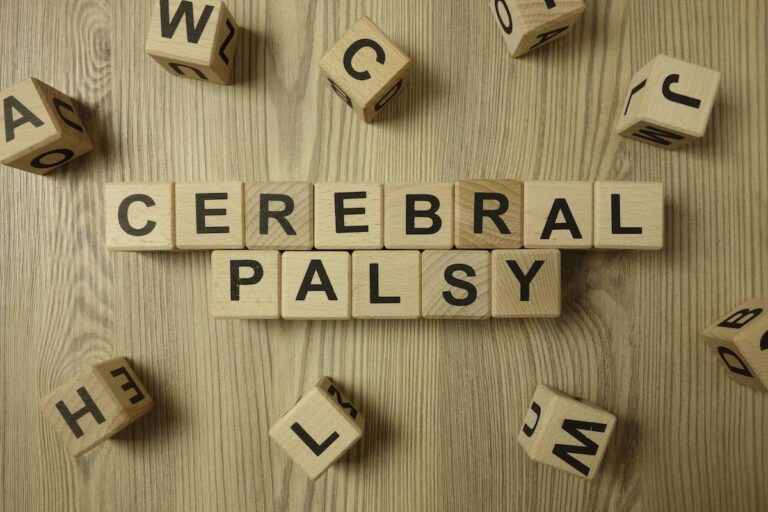
Call 24/7 for a FREE case evaluation
Call now (866) 393-4334

$100,000,000
in California case results
$20,000,000
in California jury verdicts
14
award-winning attorneys in network
Although there is no cure for cerebral palsy, therapeutic intervention can reduce negative impacts on a patient’s body and improve his or her quality of life. Specialists use several forms of therapy to help patients rise above personal injuries associated with the disorder.
Each custom therapy plan draws from appropriate disciplines, based upon the individual needs of the patient. The type of CP present, its severity and scope, as well as existing associative conditions are all considered when advising therapy.
Therapeutic benefits are extensive for patients with cerebral palsy, improving:
As part of a comprehensive treatment plan following an accident, physical therapy, speech and language therapy, and occupational therapy are among the most beneficial interventions for children with CP. Treatment focuses on limiting impairment, reinforcing patients’ ability to communicate, play, walk, dress and assist with personal care.
Goal-oriented therapy targets individual objectives, coordinating patients, caregivers and therapists from multiple disciplines. The united effort helps each child realize his or her personal potential. Managing pain, spasticity, contracture, language difficulties and other cerebral palsy symptoms bolsters independence and confidence, as well as contributing to greater mobility and better overall quality of life.
Physical therapy serves as one of the most beneficial treatments for cerebral palsy. The therapy promotes flexibility and coordination, which, in turn, contributes to greater mobility and motor functioning. PT plans can be tailored to the specific needs of each child, focusing on activities and goals important to the patient.
Working with other specialists, physical therapists strive to improve range of motion, balance, and posture. PT strengthening and stretching exercises also address contracture and spasticity, two conditions prevalent with spastic cerebral palsy – the most common form of the disorder. Parental support plays a key role assisting physical therapy, bringing therapeutic practices into the child’s home environment, where PT techniques are applied during daily activities.
Often associated with work skills, occupational therapy provides benefits for patients of all ages. Closely aligned with physical therapy, occupational goals include increased independence and quality of life improvements for each cerebral palsy patient.
Among adults and teens in the workforce, specific therapies may address skills needed on the job. For younger patients, “work” represents activities of daily life, such as personal care, play, and attending school. OT reinforces independence in these areas, using stretching, muscle stimulation, sensory training and other therapeutic tools to build range of motion, muscle function, and confidence.
CP patients frequently face communication problems. Delays learning to speak are common, as well as difficulty making sounds. Poor oral muscle control can make it challenging to articulate and produce certain sounds, so speech and language pathologists use therapy to develop oral motor skills. When communication difficulties are pronounced, augmentative and alternative forms of communication may be recommended, such as electronic reader devices or picture cards.
Language development issues can be associated with cerebral palsy, stemming from effects of the underlying neurological disorder and arising due to physical limitations. Hearing problems, for example, commonly impact CP patients, complicating normal language development.
Language therapy also reinforces eating and drinking abilities among young patients and contributes to better outcomes for those learning to speak. To have the greatest impact, therapists assess and monitor language skills, recommending various interventions as development progresses.
Supplemental therapy reinforces gains made in PT and OT settings, as well as strengthening speech and language abilities. The most effective therapy accounts for patients’ particular needs and goals, utilizing a multidisciplinary approach to yield the best possible outcomes for individual patients.
Outside cerebral palsy treatment, acupuncture is often used to relieve pain, particularly in the back, neck and joints. As such, the complementary form of therapy lends itself to treating common CP conditions. Acupuncture uses tiny needles, inserted at particular points of the body, to restore its natural state.
Although it is a relatively new form of therapy for cerebral palsy, with limited studies evaluating its efficacy; it is recognized as beneficial for relieving hypertonicity, which eases muscle tension and discomfort. According to study results recently published by the Healthcare Medicine Institute, acupuncture also mitigates CP complications like hearing disorders and drooling.
Water provides an ideal environment for cerebral palsy rehabilitation therapy. Buoyancy reduces the effect of gravity on CP patients’ joints and musculature, helping them move freely without restriction from their own body weight.
As a result, a patient can achieve all the benefits of exercise, without musculoskeletal stress. The natural resistance of water, which varies according to the speed of movement, also helps build endurance, enabling greater repetition of therapeutic exercises. In addition, water has a healing influence, particularly warm water, which soothes sore muscles, tendons and ligaments.
Cerebral palsy symptoms often include behavioral and emotional challenges. Cognitive behavioral therapy discourages destructive actions and encourages self-sufficiency among CP patients – addressing physical manifestations as well as cognitive irregularities. In practice, successful behavioral intervention enlists parents as vital partners, coaching them to reinforce therapy at home, where issues are often most apparent.
Developmental problems appear at different stages in a child’s life. In infancy, behavioral concerns may manifest as sleep difficulties and excessive crying. As a child ages, withdrawal, aggression, anxiety and depression may illustrate an internal struggle with his or her condition. Behavioral intervention strives to identify particular challenges and intervene with appropriate measures. In particular, behavioral therapy helps patients manage emotions, develop social skills, reduce anxiety, and maintain focus.
This intensive, multidisciplinary form of education seeks to improve function through learning. Emphasizing the personality and abilities of each patient, the therapy utilizes medical knowledge and educational methods side-by-side, stimulating social integration and positive self-image. Conductive education also strives to enhance self-reliance, teaching problem-solving skills for daily living.
Cerebral palsy can affect muscles in the face, mouth and throat, making it difficult for patients to eat and swallow. Digestive complications are also common, leading to GERD and other GI conditions impacting nutrition. Counseling addresses pain, malnutrition, incontinence, developmental delays, and other diet and nutrition concerns.
Horseback riding presents many benefits for CP patients. To ride, patients must react to the movements of the horse, which is thought to reinforce neuromuscular development. Physical involvement improves balance and control, mobilizing the pelvis, hips and muscles in the torso. Equine-assisted therapy also contributes to emotional well-being, as children interact with horses and engage in an enjoyable activity.
This progressive treatment places the cerebral palsy patient in a specially designed suit, which can be adjusted for the child’s size. The suit helps restore the body’s natural alignment, limiting movement and encouraging the brain to recognize the body’s normal orientation. While wearing the suits, patients participate in activities and exercises designed to improve posture, muscle tone and structures impeding mobility.
As part of a comprehensive treatment plan, massage therapy contributes to several benefits among CP patients. In addition to enhancing relaxation and well-being, the therapy can improve circulation and musculoskeletal issues. Manipulating soft body tissue has a comforting effect, putting patients at-ease and supporting other forms of therapy. Massage can also reduce pain suffered by CP patients.
Play is a child’s primary form of expression, so it serves an integral purpose in effective therapy. Without words to convey their feelings, children’s behavior becomes the default communication mechanism.
Play therapy creates environments where children feel safe, enabling them to explore feelings and develop problem-solving skills – while under the supervision of a trained therapist. Puppets and other toys are used to facilitate breakthroughs, and technology now contributes computer games designed for play therapy.
Like play therapy, therapeutic recreation is integrated alongside physical and occupational approaches to make the process fun for young CP patients. Because many individuals diagnosed with cerebral palsy have limited ability to explore the world on their own, these creative therapy solutions stimulate engagement and enable children to participate in recreational activities they enjoy.
Difficulty swallowing and other related symptoms can be problematic for cerebral palsy patients, increasing their vulnerability to serious lung complications. Symptoms may present as cough, wheeze, or choking, and serious conditions can arise when swallowing challenges result in food migrating to the airways. Pulmonologists also consult on CP cases when muscle weakness makes breathing difficult, monitoring the condition and recommending activities and medication for relief.
Sensory perception influences muscle and motor control, so increased or decreased sensory processing leads to awkward, clumsy movements. Patients with CP exhibit these sensory irregularities, calling for therapy to correct the condition. They may also experience mental and emotional challenges resulting from mixed sensory signals. Sensory therapy strives to strengthen connections within the brain, helping patients better interpret and understand common stimuli.
Children with cerebral palsy often have difficulty forming relationships and interacting in unfamiliar settings. The social anxiety and shyness observed in many patients manifests from limited opportunities to develop these social skills. In contrast, healthy children learn these lessons through repeated interactions in diverse settings. Social therapy focuses on creating experiences beneficial to a child’s development, but the treatment also strives to enhance self-perception and build social confidence.
While occupational therapy addresses myriad physical conditions and provides hands-on treatment supporting gainful employment, vocational counseling is centered on giving able patients the best chance of securing rewarding employment. By assessing abilities, interests and aptitude for particular jobs, counselors are able to guide patients into appropriate work roles. Adaptive equipment, office modifications and focused training are then provided, to ensure success on-the-job.
Therapeutic benefits are enhanced when cerebral palsy patients are comfortable and relaxed with the treatment environment and therapist providing care. Music provides a natural bridge, calming patients and reinforcing their relationships with therapists. Integrating music into therapy programs also spurs communication improvements and social development, as children express themselves by singing along, playing an instrument and moving to the sound of music.
Chiropractic medicine is an alternative form of therapy, focusing on the spine’s involvement in overall health. Advocates believe correcting problems in the central area around the spine carries-over to the extremities, relieving pain and increasing quality of life. The treatment can be beneficial for some cerebral palsy patients, ostensibly improving communication between the brain and nerves in the spine. Some evidence suggests success mitigating spasms, seizures and other cerebral palsy symptoms.
WE’RE OPEN NOW
Our staff are standing by to help you find the perfect attorney for your case.

Published: 17 May 2022
NAPA – Acupuncture as a Treatment for Cerebral Palsy
HealthCMi – Acupuncture Relieves Cerebral Palsy Complications
Move Forward – Physical Therapist’s Guide to Cerebral Palsy
RT Magazine – Respiratory Disease a Concern for Cerebral Palsy Sufferers
eMedicineHealth – Cerebral PalsyOrthoInfo – Erb’s Palsy (Brachial Plexus Birth Palsy)